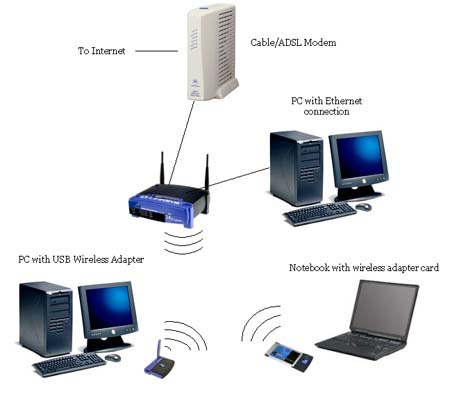Factors Affecting Data Transmission
1. Bandwidth. It refers to the data carrying capacity of a channel or medium. Higher bandwidth communication channels support higher data rates.
Bandwidth
Bandwidth in computer networking refers to the data rate supported by a network connection or interface. One most commonly expresses bandwidth in terms of bits per second (bps). The term comes from the field of electrical engineering, where bandwidth represents the total distance or range between the highest and lowest signals on the communication channel (band).
Bandwidth represents the capacity of the connection. The greater the capacity, the more likely that greater performance will follow, though overall performance also depends on other factors, such as latency.
Also Known As: throughput
Examples:
A V.90 modem supports a maximum theoretical bandwidth of 56 Kbps. Fast Ethernet supports a theoretical maximum bandwidth of 100 Mbps.
Bandwidth is typically measured in bits per second (bps). Commonly used larger units are kilobits per second (Kbps), megabits per second (Mbps) and gigabits per second (Gbps).
It is important to distinguish between bits per second (bps) and bytes per second (Bps). One byte is equal to 8 bits. Most data measurements in computing are made in bytes and units of that, such as megabytes or gigabytes. Since network speeds are measured in bits, not bytes, a 10 Megabyte file will take 8 seconds to download on a 10 Mbps connection, not 1 second.
Internet speed measurement can be complicated by the fact that although you may have a high-speed link to your Internet Service Provider (ISP), you will then have to contend (share) the bandwidth with other users of the same ISP.
2. Radiation. It refers to the leakage of signal from the medium due to undesirable electrical characteristics of the medium.
3. Noise Absorption. It refers to the susceptibility of the media to external electrical noise that can cause distortion of data signal.
4. Attenuation. It refers to loss of energy as signal propagates outwards. The amount of energy lost depends on frequency. Radiations and physical characteristics of media contribute to attenuation.
Wireless Transmission Media:
Many users opt for wireless transmission media because it is more convenient than installing
cables. In addition to convenience, businesses use wireless transmission media in locations where it
is impossible to install cables. Types of wireless transmission media used in
communications include infrared, broadcast radio, cellular radio, microwaves, and communications
satellites.
Infrared
As discussed earlier in the chapter, infrared (IR) is a wireless transmission medium that sends
signals using infrared light waves. Mobile computers and devices, such as a mouse, printer,
and smart phone, often have an IrDA port that enables the transfer of data from one device to
another using infrared light waves.
Broadcast Radio
Broadcast radio is a wireless transmission medium that distributes radio signals through
the air over long distances such as between cities, regions, and countries and short distances
such as within an office or home. For radio transmissions, you need a transmitter
to send the broadcast radio signal and a receiver to accept it. To receive the broadcast radio signal, the receiver has an antenna that is located In the range of the signal. Some networks use a
transceiver, which both sends and receives signals from wireless devices. Broadcast radio is slower
and more susceptible to noise than physical transmission media but it provides flexibility and
portability.Bluetooth, UWB, Wi-Fi, and WiMAX communications technologies discussed earlier in this chapter use broadcast radio signals. Bluetooth and UWB are alternatives to infrared communications, with the latter designed for high bandwidth transmissions. Hot spots use
Wi-Fi, WiMAX, and Bluetooth networks.
Example of transmission media :